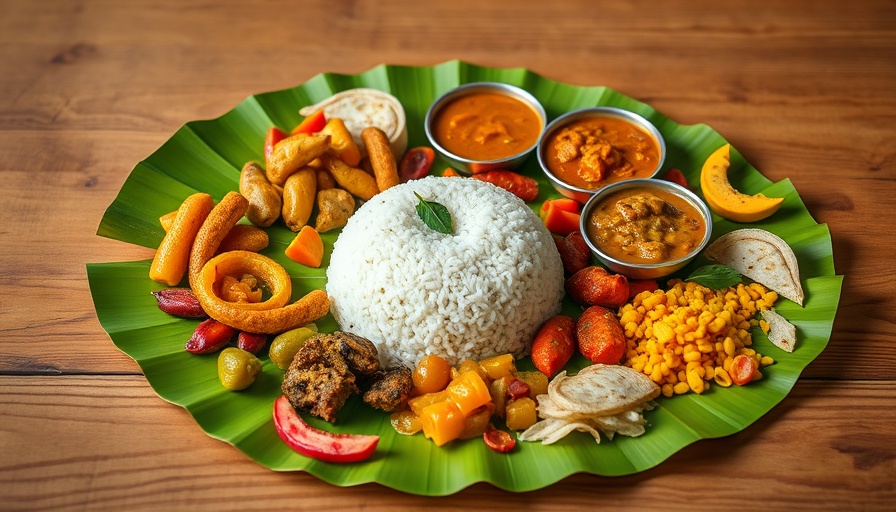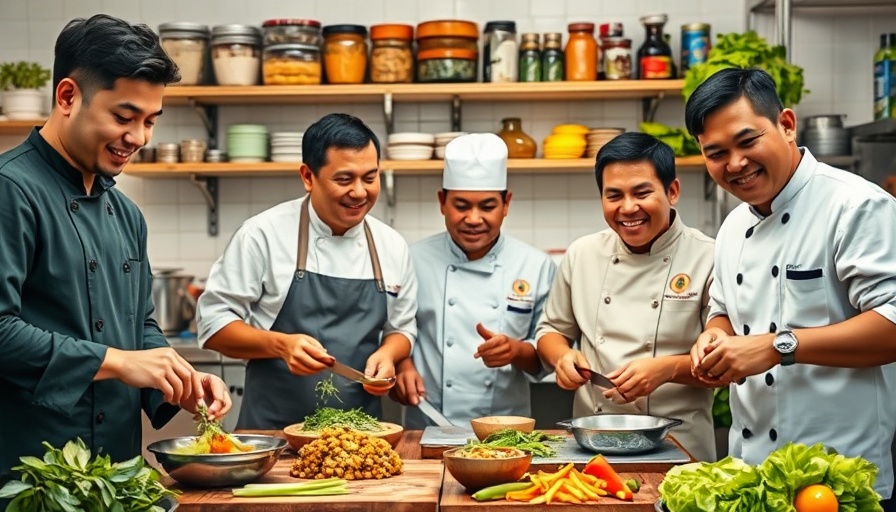
Unveiling Kerala's Vegetarian Culinary Treasures
When one thinks of Kerala, images of lush landscapes and tranquil backwaters often come to mind, but for many, like myself, it’s the vegetarian culinary landscape that truly captivates the senses. This part of India has transformed my annual wellness retreat into a delightful gastronomic journey. The vibrant flavors and diverse dishes create an immersive experience that extends far beyond traditional Indian cuisine.
The Sweet Symphony of Aval Vilayichathu
My first taste of Aval Vilayichathu was a defining moment during my stay at The Nattika Resort. This delightful dish, a concoction of beaten rice, jaggery, coconut, and cardamom, captured my heart and tastebuds instantly. It’s traditionally served with tea, but its warm, coconutty sweetness lingered with me throughout my stay. That day as I was leaving, the chef surprised me with a takeaway—an extra piece of warmth to carry on my journey. The personal touch from the chef highlighted the hospitality that makes Kerala special.
Idiyappam: A Delicate Dance of Flavors
Another gem on my culinary exploration is Idiyappam. At first, this stack of steamed rice noodles felt foreign, yet I soon found comfort in its texture paired with coconut milk. Eating it straight from a local kitchen, with its nourishing aroma wafting through the air, made it a truly comforting experience. It’s a staple you’ll find in homes across Kerala, highlighting the simplicity and warmth that characterize the region’s cuisine.
Puttu: An Epicurean Tower of Wholesomeness
My love affair with Puttu blossomed in Kerala, where its variations upended my expectations. From beetroot to spinach and coconut layers, each new version of this steamed delicacy affirmed its place in my heart. Having it at the Sitaram Beach Retreat was a culinary highlight, making breakfast feel celebratory. The soft, steamed goodness packed with nutritional value is why this dish has gained a cult following among locals and visitors alike.
Thoran: Flavors that Evoke Nostalgia
Thoran, a stir-fried vegetable dish laced with coconut, exemplifies the simplicity that defines Kerala's cuisine. Each serving—be it cabbage, beans, or jackfruit—resonates with the idea of home, surrounded by the lush coconut trees and rhythmic temple bells. The coconut oil, mustard seeds, and curry leaves used in its preparation create a bouquet of flavors that transport you to the heart of Kerala.
Sadya: A Grand Feast on a Banana Leaf
The pinnacle of my culinary experiences was the Sadya, an elaborate feast plated on a banana leaf. At The Nattika Resort, I was introduced to this time-honored tradition that showcases an array of flavors, textures, and colors. It is not merely a meal; it’s an experience that symbolizes Kerala's rich cultural heritage, capturing the vibrancy of the local agricultural bounty. Each bite offers a new avenue of taste, making Sadya a highlight of any visit.
Why Embracing Kerala's Vegetarian Delicacies Matters
Experiencing the vegetarian fare in Kerala goes beyond taste; it’s about embracing a holistic perspective on wellness and cultural appreciation. As these dishes connect us to the land and its people, they also promote sustainable eating, encouraging a deeper respect for nature and its gifts.
Final Thoughts on Kerala's Vegetarian Cuisine
Kerala’s vegetarian food is not just a meal; it’s a journey filled with heartwarming memories and vibrant flavors. Every visit for me is not just about relaxation but also about savoring the rich culinary traditions that define this beautiful state. The next time you plan your travels, let the vegetarian delights of Kerala guide your itinerary!
 Add Row
Add Row  Add
Add 




Write A Comment